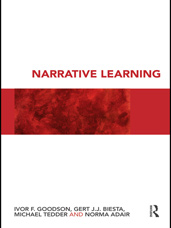Narrative Learning
Towards a Theory of Narrative Learning
But as we have seen, the narrative resources that people have available differ widely in their characteristics – their narrative quality – and in their efficacy. It is here that we wish to remind the reader of two important findings from our analysis. The first is that the presence of an elaborate, analytical and emplotted narrative is not, in itself, evidence of ongoing learning. It is here that the distinction between the narrative as the outcome of learning and the narration as a process of ongoing learning is important in theorising narrative learning – and we can characterize this as a distinction between more ‘closed’ and more ‘open’ narratives. But what our cases also show is that more ‘open’ narratives – narratives ‘under construction,’ so to say, narratives where there appears to be ongoing narrative learning – are not in themselves a guarantee for ‘translation’ into action. This is how we have suggested to read Paul Larsen’s case, that is, as an example of narrative learning where the learning, the ongoing development of narrative resources, seems to have become more an end in itself rather than a means towards other ends. There is, as we have put it, too much narrative learning going on which, in a sense, gets in the way of action. Ongoing narrative learning seems to have become the centre of gravity of Paul’s life. And although this provides him with significant opportunities for reflection, action comes, by a long distance, as a secondary concern – and in some respects it does not come at all. While Socrates may have asserted that the unexamined life is not worth living, Paul Larsen’s case reminds us that the opposite is sometimes more true, i.e., that the unlived life is perhaps not worth examining (Biesta, 2002).
On the basis of our data it is difficult to say why some people’s narratives are more closed and why others are more open. Similarly it is difficult to say why in some cases narrative learning ‘translates’ into action, and in other cases not. There is, however, one important pattern emerging from our data that seems to suggest that in those cases where the self is part of what the ongoing narration is about, the narrative has a tendency to remain more open – which, in some cases, seems to impact positively on the efficacy of the storying, that is, on the action potential of narrative learning. The question of self connects our analysis with issues concerning identity and agency. It is important to keep those two terms together in understanding the self because a discourse solely in terms of identity runs the risk of moving the question of narrative learning too much towards self-referential if not self-obsessed forms of narration and learning.
